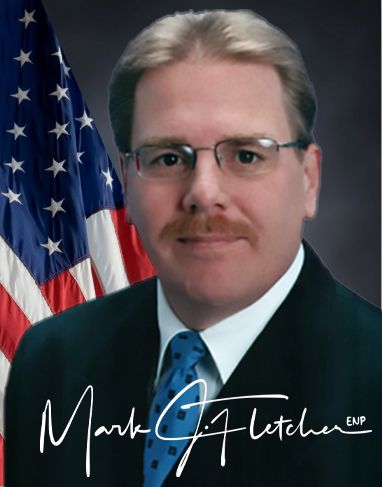Second of Two Parts
To protect employees working from any location, enterprises need to understand a wide range of issues associated with deploying an emergency management system, including new NG9-1-1 solutions. There are legal and moral considerations, as well as the normal challenges of integrating an NG9-1-1 solution with any new or existing on-prem and cloud-based voice infrastructure.
Getting first responders to the right location as quickly as possible was the focus of an Enterprise Connect 2023 panel discussion on “Managing E911 for the Hybrid Workforce.” Moderated once again by Irwin Lazar, president and principal analyst for Metrigy, the participants were Brooks Shannon interoperability program manager for the National Emergency Number Association (NENA), attorney Martha Buyer, Richard St. Jean, Intrado product manager, Robin Erkkila, public solutions engineering, Bandwidth; and myself.
Based on that discussion, as well as numerous conversations with enterprise IT managers, here are 10 suggestions for planning your NG9-1-1 deployment.
1. Know the requirements of Kari’s Law and RAY BAUM’S Act. To take just one example, Kari’s Law requires organizations to provide contemporaneous notification to an on-site representative as well as a callback number, along with enabling the ability to directly dial 911. Keep in mind that these regulations focus on providing life-saving 911 outcomes, and do not specify any specific technology architectures to deliver the functionality.
2. Understand the legal and financial risks. New state and federal legislation, as well as labor laws, require enterprises to provide a safe environment for all their employees. Not being able to provide an accurate location for a 911 caller creates a clear legal liability, and the possibility of an expensive gross negligence civil lawsuit if things go wrong.
3. Create an NG911 planning team. Implementing or making the transition to NG911 goes well-beyond just technology considerations. Be sure to include both a legal and human resource representative, as well as end users on your team. Again, your goals are to safeguard employees, while ensuring compliance with 911 laws and regulations.
4. Meet with local public safety professionals. States, counties and cities are at different stages of implementing next generation technology. This should not delay your deployment of NG9-1-1, as any system is capable of backwards compatibility. Talking with local 911 professionals, as well as a certified NENA Emergency Number Professional (ENP) will help you understand how dispatchable location information can be conveyed to emergency services today as well as NG9-1-1 information in future systems. Remember, public safety officials often do not have an understanding of enterprise IT networking and functionality, and often cannot comment with authority on the matter. Their expertise is on the consumption of the information you provide, not how to manage and deliver the data to them.
5. Learn how NG9-1-1 location data is validated, stored and conveyed. Enterprises may need to send dispatchable location information in new formats in order to be consumed by the local 911 and NG9-1-1 systems currently deployed. For instance, a set of x-y-z coordinates might be needed for a 911 call coming from a multi-story building. That could be converted by the NG9-1-1 network carrier today, and later passed directly to the public safety agency as current technology is upgraded. This can save a significant amount of work later, while realizing the maximum value now and into the future.
6. Check your facility’s wireless coverage. Since 80 percent or more of 911 calls are made from mobile devices, your facility should have appropriate coverage for those calls to get through. This may involve investing in distributed antenna systems (DAS), or a new 5G radio access network (RAN). The last thing you want is for an employee to pick up a smartphone in an emergency, only to have no bars on the screen.
7. Cover remote workers and on-site guests. Whether working from home, office or hotel room, your employees must be included in your 911 solution. While the legacy 911 network functionality will be supported in the future through backward compatibility, NG9-1-1 solutions deploy new methodologies that are financially more efficient than the legacy solutions. Whether you are installing a new system or replacing a legacy solution, it is likely an NG9-1-1 solution will more financially attractive to operate. And remember to cover any guests in your organization’s facilities as well, including hotel/motel environments and commercial space. Safety is the number one concern.
8. Educate your users. Employees should be advised that enabling location settings in their corporate and personal mobile devices can expedite an emergency response. While you probably will get some pushback from users concerned about their personal privacy, remind them that no personally identifiable information (PII) will be exposed to the enterprise or to public safety. In fact, cellular devices that make emergency calls with location services OFF, turn those services on briefly when an emergency call is initiated. Because location acquisition often takes time to establish after services are activated, a much less accurate position reliability is sent on the initial 911 call, and often delayed by 30 seconds or more before being available to public safety.
9. Talk with your peers. Most enterprises throughout the U.S. are wrestling with these challenges every day. But on the line is the safety of your staff and customers. Don’t hesitate to reach out to your colleagues for their opinions. You should also plan to attend Avaya ENGAGE 2023 in Orlando on June 18-21 where NG9-1-1 will once again be an important session topic.
10. Consult with an emergency number professional (ENP). As you navigate the changing 911 landscape, an experienced ENP can provide the best advice on deploying a customized end-to-end NG9-1-1 solution for your organization. Changing legislation, new modalities and an overview of the industry from the enterprise segment as well as the public safety aspect is critical. Be certain your advisor has demonstrated knowledge in both areas.

Vice President of Public Safety, 911inform, LLC
